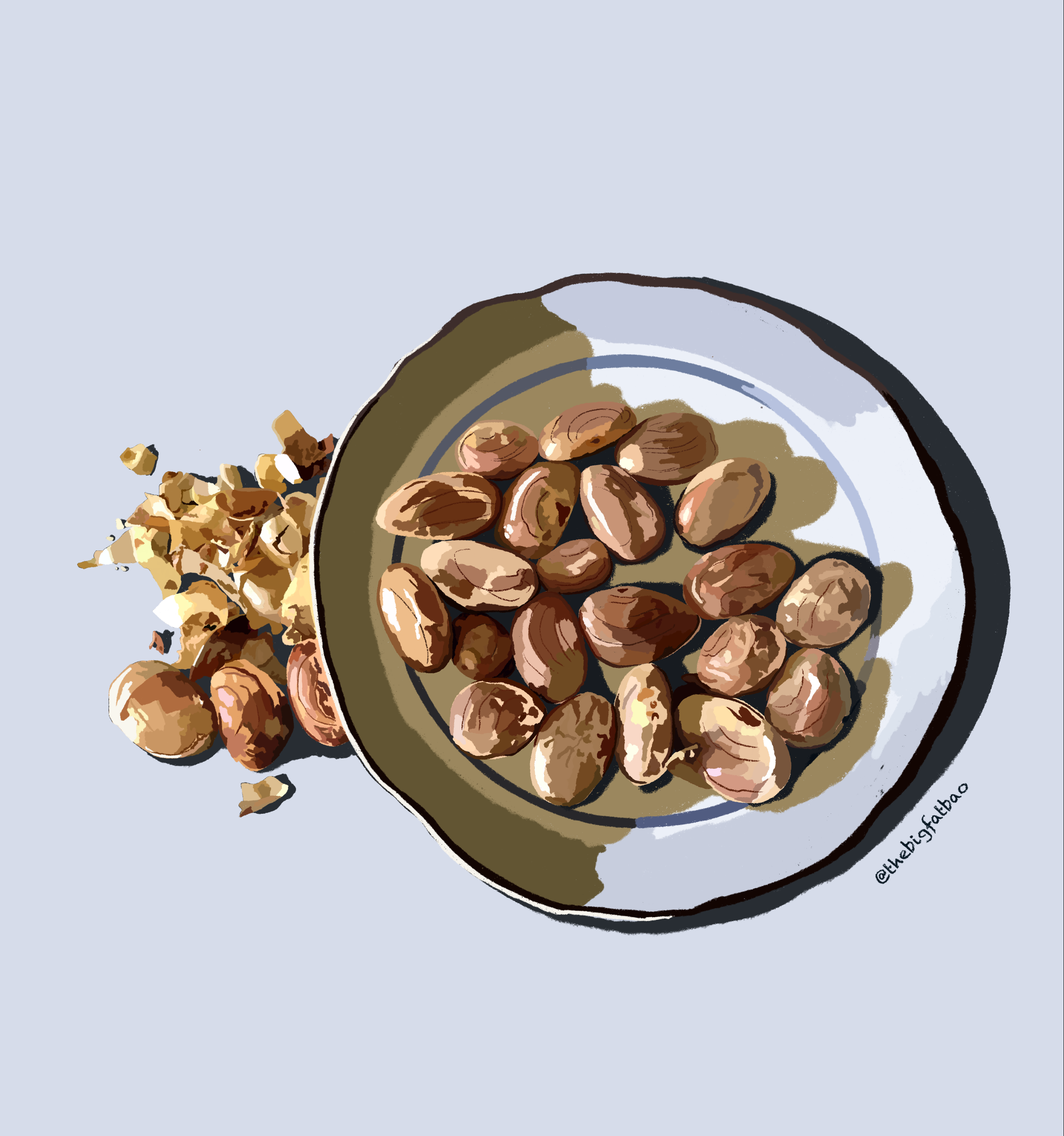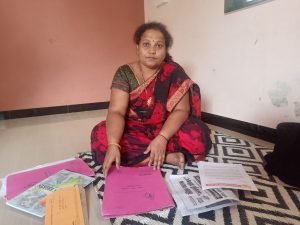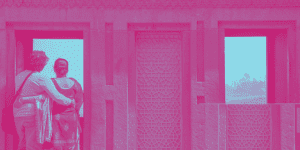The Subtle Brutal Flavours of Casteism In My Family Kitchen
In an intercaste marriage, patriarchy and caste privilege decide food practices

Marriage and other forms of intimate interpersonal relationships are considered impenetrable private spaces. But social structures like gender, race, class, caste, and community establish their power dynamics even within this space. And the children born to intercaste families acquire the legal and social status of the father since India is a patriarchal society. This personal essay is limited to my understanding of the politics of food and food culture as reflected in the dynamics of caste and gender in my Ma’s (mother) marriage which she and I negotiate – both within our families and the larger society as members of an intercaste household.
In my intercaste household, a plate of food is not simply a plate of food. In addition to adding salt to taste, spoonfuls of casteism and domestic violence are always added to ensure that Brahminical patriarchy dominates the kitchen, our food culture, and food sensibilities. This violence exists at every stage of preparing a meal; right from deciding where ingredients will be purchased from to what kind of utensils will be used. When we talk about caste, gender, and food, it is crucial to look at it from the gaze of intersectionality to really understand the mechanisms that Brahminism utilises to perpetuate casteism and patriarchy within an intercaste household.
Most literature and writings in pop culture on the subject of food revolve around how the kitchen brings people together, is a site of romance, or is simply a neutral apolitical space. My everyday experiences and memories of caste-based domestic violence have significantly impacted the way I understand and perceive food. Casteism operates through food culture in the most obvious yet invisible ways. The intricate but volatile relationship between food and caste enfolds a visible layer of patriarchy.
Casteism is the poisonous water that seamlessly and incessantly enters food and food culture. It is imperceptible unless you learn to notice it or have experienced its unbearable bitterness firsthand. In intercaste families where the mother is from a marginalised caste and the father a Brahmin, food acts as a site of oppression, exploitation, and humiliation.
Ma grew up in a typical Maharashtrian household where dairy products were never a part of everyday consumption. Even the tea she consumed was almost always black because milk was unaffordable until she and her siblings began working full-time. On the other hand, my father never spent a day in his life inside the kitchen. As a Malayali Brahmin man, he has consumed good quality dairy products his entire life. He has never known what life is like without curds! When I was a toddler, I remember the horrifying fights and the abuse Ma went through at dinner time simply because she forgot to set up a bowl of curd or the curd didn’t set because the weather was too cold. From casteist slurs to throwing things at Ma, my father made sure that dinner and violence were served piping hot.
Definitions of a meal, hunger, culture, utensils, and culinary skills go through constant change in an intercaste household because Brahmanism ensures there can never be any place for the food or culture of the Dalit people at the table. Ma grew up experiencing hunger and starvation. There is a saying in Marathi “strichya jaatila upaasmaar ani swayampaak paachvila pujlele aahe” which translates to “if you’re born a woman, you are cursed to starve but cook for others all your whole life”. And this curse has now been passed on to me as well. I don’t remember my father ever cooking for me, not even when Ma was sick. When I was not around or incapable of cooking and Ma was severely unwell, she still had to cook at least dal khichdi because my father refused to hire a cook or order food. When my maternal grandma (Ajji) was alive, she would sometimes come over and help Ma. But because he was the only Brahmin son-in-law, my father was so entitled that he would cuss and abuse Ajji as well because she didn’t cook the way he liked his food. Imagine being abusive to your own wife, child, and mother-in-law simply because you don’t know how to cook!
Ma’s family has always been meat eaters. We all love seafood and are passionate about cooking. When I was growing up, Sunday lunch at my Ajji’s was family time where everybody would contribute in the kitchen and cook a simple meal of fish fry, curry, bhakris, and rice. But because my father was the only vegetarian, and that too a Brahmin, everyone in Ma’s family would treat him with utmost respect even if he reciprocated very disrespectfully. It was only and only for him, that a fresh bowl of curd would be purchased right before lunch was served so that it was cold and perfect in taste. His lunch was a special vegetarian meal consisting of bland dal, bhaaji, pickle, salad, curd, papad, and three chapatis. You can see for yourself how Brahmanical patriarchy controls the household and is yet invisible and oblivious to those outside its four walls. Despite the specially prepared food, my father would look at all the delicious fish and meat and shame us all for our unclean and unhealthy food choices. The food we ate was oily, spicy, and definitely “impure”, according to him. He would loudly declare that if it wasn’t for Ma he wouldn’t be sitting there with us and eating his clean and healthy vegetarian lunch.
Casteism forms the foundation of a household such as this and manifests itself through the illusive “inter-cultural” food practices. Brahmin-approved bland vegetarian foods like dosas and idli-sambar are a staple in my household but fortunately they could never dominate my tastebuds. Breakfast as a meal was never a concept in Ma’s home when she was growing up. Just tea and a couple of khaki puffs or rusk toast were enough to start the day. After marriage, an elaborate breakfast forced Ma to put in extra hours to cook and clean. It also meant that she could never ever cook meat in this household. Eating meat outside or ordering in from restaurants only became acceptable to my father in the last decade or so. But when I was growing up, Ma and I were severely shamed and insulted for loving seafood. In this intercultural sense, violence can then also be located at various points – in sourcing ingredients, abolishing one’s favorite foods, enforcing labour in the preparation of more and larger meals, and dealing with the cognitive load of just avoiding the abuse and violence that ensue if the unsaid rules of Brahminical patriarchy are not followed.
In our casteist society, shame is co opted and weaponised to maintain “purity” of caste and therefore of taste. Shame has been imposed to manipulate, oppress, and exploit Ma, her family and me through food. The politics of food in my intercaste household not only dictate what will be cooked and how, but also who gets to eat how much, when, and who conveniently ends up eating leftovers. This also leads to physical violence and verbal abuse almost on a daily basis. Everything about food – hunger, cooking, serving, cleaning, sourcing ingredients, eating, and ways of eating – are almost always acts of violence. Something as simple as serving a few Parle G biscuits can become a violent act. I can never forget the time my paternal grandma made me sit in the dusty kitchen corner and served just four biscuits on a small piece of newspaper while my paternal cousins were served a large fine China plate full of cream biscuits and other savory snacks. It didn’t take me long to understand that my gender and my mother’s “impure” caste will never be acceptable to this patriarchal casteist side of my identity.
To be in such an intercaste marriage implies learning to navigate taste and food culture. As a Maharashtrian Bahujan, Ma never knew what south Indian food was until she was about 20 years old when she and her family went to eat at a nearby restaurant for the very first time. The occasion was to celebrate her first salary from her full-time job and 10 of them shared one masala dosa because that is all she could afford. Before her marriage, she obviously had no idea how to prepare South Indian food. Her marriage to my father then forced her to not only navigate and accept vegetarian South Indian food, but also learn to cook it. Unfortunately, not knowing how to prepare dosa, idlis, or sambar, landed her on a double-edged sword – she was constantly humiliated for being an untouchable, meat-eating Maharashtrian village woman who not only didn’t know how to cook South Indian food but was also expected to learn how to do it from her friends and colleagues instead of being taught by her husband and/or in-laws. There were so many instances – when her mother-in-law shamed her for spreading the dosa batter on the pan in an anti-clockwise direction. Apparently, it would bring bad luck and was considered an impure practice! The shame that was weaponised by Brahminism in her intercaste marriage manipulated Ma not only into learning how to cook Kerala food but to eventually give up all her favorite foods and finally become a vegetarian.
The burden of ensuring that there is enough food for everyone almost always falls on women. Men will always get a larger share and eat first. They almost always insist on freshly prepared food, unlike the women who get to eat the leftovers. Growing up, I also witnessed my mother’s first hand experience of a battle at building this “negotiated taste” across two cultures. She was used to eating meat and spicy food, but my father always insisted on eating flavor-less and tasteless “pure” vegetarian food. For her own safety and mine, she would take cooking lessons from her colleagues on vegetarian cooking in order to satisfy my father’s food preferences. To this day, she continues to remain fearful of adding chillies to the food she is cooking and has entirely sacrificed her own food choices. Brahminical patriarchy has shredded her taste buds and every meal for 35 years has been about systematically shaming and manipulating her into turning vegetarian.
For me, food is very much a part of my identity, because my choices are shaped by it and vice versa. Cultures across the world are identified according to the kinds of food people eat. However, because of my intercaste identity and its intersections with class, urban environment, and other factors, I deeply fear that not acknowledging the food and food sensibilities of my Bahujan side will lead to the erasure of my lived experiences and Bahujan identity. Since there is no recorded and documented culture of intercaste family dynamics around food and the mechanisms through which Brahmanism dominates the kitchen in these households, I believe it is crucial for me to bring out these conversations more publicly.
My relationship with people and food is entirely based on the recipes that Ma and Ajji shared with me in the moments when my father’s influence became insignificant. My way of navigating food sensibilities and annihilating caste in this household is by tracing back my childhood, bringing back memories of violent episodes, and documenting the brief granny-mother-daughter bonds formed in the act of teaching and learning to cook. I want to cherish and revive foods like bhakris, goad pohe, rakti, chimbori, sukkat, fish fry, kaleji fry, bhanore and more.
For much of my life, each meal was a site of violence and reinforced casteism. My food culture goes back to the lack of resources but I take pride in it. It may have been enforced by the upper caste side of my identity, but it is mine to own. I think this ownership is also what most Dalit communities celebrate everyday with their simple and humble meals. There is dignity and an assertion of my identity as an Ambedkarite Buddhist when I am documenting and enjoying my culture and food. My celebration begins with the reclamation of my maternal recipes and their histories.
[This personal essay is part of our Dalit History Month Series]
Our Newsletter
Subscribe to Our Newsletter
We believe everyone deserves equal access to accurate news. Support from our readers enables us to keep our journalism open and free for everyone, all over the world.



